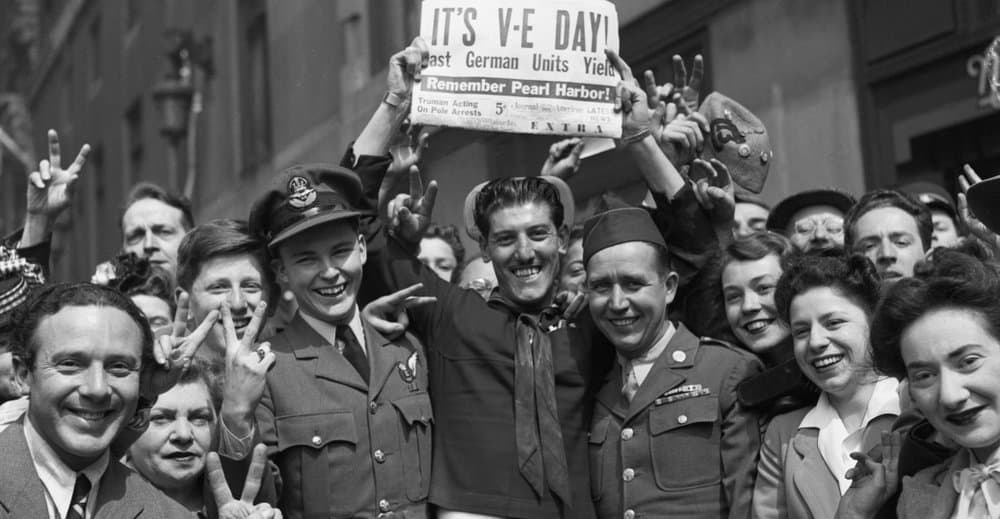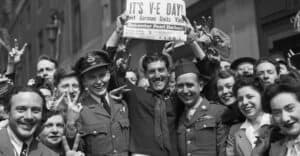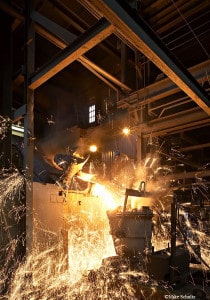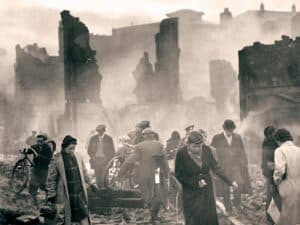A Short History of the Iron Foundry in America: Rebuilding After World Wars

Foundries Bring the World Into the Modern Age One Iron Casting at a Time
The legacy of iron castings has had an impact throughout the history of our country. Willman has been there since 1912, serving our country and serving our customers with excellence! Through the years after World War II, Willman has sailed a steady course through the highs and lows of our economy.

In the years immediately after the end of World War II, the economy of the United States took a decidedly more positive trajectory. The country was struggling to climb out of the Great Depression as the first shots of the second great war rang across the sea. The two world wars had changed everything. The very geography of Europe had been remolded and decimated. There were no places on that continent that had not been touched by the war in one way or another. Young men had died, families shattered, villages burned, and governments had been overthrown. Many walls bore the scars of the bullets, mortars, and artillery that had claimed so many lives, serving as a silent reminder of all that had been lost.
The War’s Aftermath
With the end of the war, Germany was torn apart. Post-war Germany was governed by the leading Allied nations. The German government was in shambles, as was much of the country’s infrastructure. Its cities were shattered by incessant Allied bombing. Regional capitals like Dresden were reduced to ash-covered rubble. The Allies had taken much of the German industrial capabilities out of commission before reaching the tipping point where such destruction would complicate their conquest of the country. Winston Churchill wrote a memo a month and a half after the destruction of Dresden that recommended against any further bombings for the very practical reason that the British “come into control of an utterly ruined land”.
But, just as it was after the first world war, Europe was only limping along industrially once the hostilities ceased. Destruction was widespread throughout eastern France and all of Germany, Poland, and Czechoslovakia. The Soviet Union and Italy were similarly affected. There were major population displacements In Germany, Poland, and the Slavs countries. Britain had been relentlessly bombed and had spent a quarter of its national wealth on the war. In response to the plight of Europe, the United States Congress passed the Marshall Plan. This Plan allocated $13 billion US dollars ($158 billion in 2022 dollars, adjusting for inflation) into the rebuilding of Europe.
The Beginning of the Cold War
In the late Forties and early Fifties, the Soviet Union worked feverishly to consolidate power in eastern Europe. Winston Churchill referred to it in 1946 as an “Iron Curtain” that had “descended across the continent. Behind that line lie all the capitals of the ancient states of Central and Eastern Europe. Warsaw, Berlin, Prague, Vienna, Budapest, Belgrade, Bucharest and Sofia, all these famous cities and the populations around them lie in what I must call the Soviet sphere.”
By the early 1950s, the Cold War had begun in earnest. This transformed the economies of many countries that had been affected by the war. The United States, which was again in a position to best take advantage of post-war needs, cemented its place as the world’s first superpower. The Soviets utilized the combined economic and scientific power of eastern Europe to transform itself into the second world superpower. The competition for influence and power created tension that was felt throughout the world.

That tension caused a burst in innovation and modernization in all industries. The US economy heated up, followed by corrections and adjustments as Europe recovered. These adjustments had a ripple effect through many industries, including the iron foundry industry. There were many foundries that overextended themselves during the economic boom, finding themselves in dire straits as the economy contracted. There were others that fared better due to a better financial plan.
The Journey of an Iron Foundry
As consumer needs changed along with the economy during the war and after, the foundry at Cedar Grove was sold twice. Ed State purchased the foundry in 1940 and renamed the company “State Foundry”. As such, it was the first foundry in Wisconsin to produce ductile iron, following the Meehanite method. Foundry owners and engineers came from around the world to learn the process from the engineers at our foundry.
In 1965 the foundry was sold again. This time it was sold to Medalist Industries and renamed Medalist State Foundry. At the time that Medalist purchased the foundry, it was one of the 20-30 companies owned and operated by the conglomerate. The early 1970s saw the foundry in need of strong leadership. In 1972, Clay Willman was named foundry president and quickly took the reins. He was successful at his new charge and was recognized for his efforts. During his tenure, the struggling foundry found its footing and quickly became profitable. Several years later he was promoted to corporate group president for the parent company. After corporate success, Willman wanted a bigger challenge. He saw the potential in the foundry he had first run more than ten years before. He had connected with the people and the town. He knew what they could accomplish and wanted to help them to achieve it.
Willman Industries Is Born
 On September 1, 1987, Clay Willman purchased the foundry and renamed it Willman Industries. Over the years they have watched many of their competitors fail, primarily due to a lack of commitment to quality or unsound financial decisions. The Willman family has maintained their dedication to quality and fiscal responsibility from day one. Since 1987 the foundry has tripled in production, increasing in sales and quality. Every year they pour profits back into the business, regardless of the economy. They have established scholarship programs for the children of their employees that are pursuing degrees in engineering. They encourage them to return to Cedar Grove to help build the business and the community.
On September 1, 1987, Clay Willman purchased the foundry and renamed it Willman Industries. Over the years they have watched many of their competitors fail, primarily due to a lack of commitment to quality or unsound financial decisions. The Willman family has maintained their dedication to quality and fiscal responsibility from day one. Since 1987 the foundry has tripled in production, increasing in sales and quality. Every year they pour profits back into the business, regardless of the economy. They have established scholarship programs for the children of their employees that are pursuing degrees in engineering. They encourage them to return to Cedar Grove to help build the business and the community.In addition to our team of engineers who are continually improving our facilities and processes, we are also finding new areas of growth. Over the past several years we have been exploring the potential of 3D printing technology to assist with developing prototype cores and molds. We have also invested in our environment by implementing new recycling processes and methods for our spent sand.
A Heritage of Innovation
Our heritage of innovation and determination is what established our foundry. The generations of families that have worked in and around our foundry have made it what it is today. Our employees are the best in the business, dedicated to producing the best parts in the industry. We are profoundly aware that the history we are making today is the heritage that our children and grandchildren will build upon.
Let us use that rich heritage and legacy-building determination to your benefit. Call us today and schedule a tour of our state-of-the-art facilities. Watch our dedication to our craft and the innovation of our engineers as we work diligently for our customers. Then sit down with our planners and discuss the parts you need and the quality we can provide. Choose quality, choose Willman.



